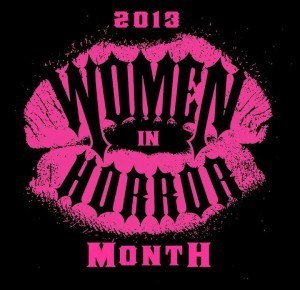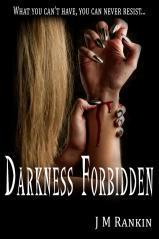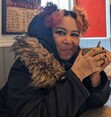Sumiko Saulson's Blog, page 53
February 27, 2013
22 Interviews in 28 Days – Women in Horror Interview Series
Now that Women in Horror Month is coming to a close… I’d like to post a nice round up of the entire Women in Horror Month Interview Series, which can be found hereafter at the permanent link on my site here: http://sumikosaulson.com/women-in-horror-month-2013/ or under WiHM2013 in the side bar. All of the interviews are in except for Nnedi Okorafor as of this posting – that is 22 interviews (Okorafor would make 23) for the Women in Horror Month Interview Series. Although some of the interviews were done before February 2013, the majority of them are new, done in the past month. Here they are together in one place (a table of contents, if you will) for your enjoyment.
The Interviews:
Nnedi Okorafor
If you are interested in being interviewed, please see my Interviews page.
The Guest Blogs:
“Things That Go Bump In My Head” is featuring a series of Guest Blogs in honor of “Women in Horror” month:
Joslyn Corvis - On Bullying & Young Writers
Kateryna Fury - On Images of Disability in Horror
Hollis Jay - On Women and Gender Roles in Horror
David Watson - On LA Banks and Octavia Butler
Black Women in Horror Series:
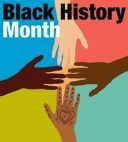 Additionally, Sumiko Saulson is composing a list of Black Women in Horror in horror of both Women in Horror Month and Black History Month. She is also interviewing black women in horror for associated with the series.
Additionally, Sumiko Saulson is composing a list of Black Women in Horror in horror of both Women in Horror Month and Black History Month. She is also interviewing black women in horror for associated with the series.
20 Black Women in Horror Fiction
21 More Black Women in Horror Fiction
On LA Banks and Octavia Butler (Guest Blog)
The Interviews:
Nnedi Okorafor


February 26, 2013
Interview with J.M. Rankin, author of Darkness Forbidden
This interview is being included in the 2013 Women in Horror Interview Series. Every February, Women in Horror Recognition Month (WiHM) assists underrepresented female genre artists in gaining opportunities, exposure, and education through altruistic events, printed material, articles, interviews, and online support. You can find out more about WiHM here:
http://www.womeninhorrormonth.com/
The Author
J.M. Rankin is the author of Darkness Forbidden, her first novel published by Scorpius Books in December 2012. The sequels, Retribution Darkened and Dark Child, will be published in 2013. In between writing and working as a freelance copy-editor, Jacqui spends her time running round after a very active toddler. She loves watching True Blood, The Walking Dead, Family Guy, and is a confessed soap freak! She reads as much as time allows, and listens to an eclectic range of music depending on her mood and what she is writing.
The Book
Darkness Forbidden
What you can’t have, you can never resist…
Immortal, ruthless, cunning…
Obsessed with the fatally seductive and evil Nadia, Alex Demeter finds himself intrigued by Catrina, a human with a tormented past she cannot escape.
Disturbed by his distraction, Nadia wagers the ultimate prize: the one thing Alex could never have.
Yet as Nadia’s own games grow more sadistic, Alex’s past is brought horrifically to the surface. As Alex is forced to face truths he would rather stay hidden, the humans around him find themselves pawns in a game they could never understand.
Sparks fly in this dangerous tale of obsession as Alex and Nadia play deadly games of sex and betrayal…
The Interview
Q. Your debut novel “Darkness Forbidden” just came out in December. A first novel is exciting for any writer – but you’re already working on it’s sequels “Retribution Darkened” and “Dark Child.: Are you still feeling the rush of the publication of your first novel, or are the sequels keeping you too busy to think about it?
A. To be honest it’s all still a bit of a blur!! The over all work involved in promotion etc, as well as working on the sequels have kept me incredibly busy but I am still riding the high of having my first novel published! It is definitely more satisfying than seeing the manuscript gathering dust in a drawer!
Q.”Darkness Forbidden” centers around a love triangle. Vampire Alex Demeter is obsessed with the fatally seductive and evil Nadia, yet finds himself intrigued by Catrina, a human with a past she cannot escape. Do you think a lot of readers will imagine themselves in Catrina’s shoes?
A. It took a long time to develop each of the characters in the novel as they all have an intricate past, and in Alex and Catrina’s case their pasts are what draw them to each other. I’d like to think people can relate to Catrina in one way or another, though she was by no means meant to be a stereotype or cliché. She was simply built on the basis of one person having a bad experience that defined their lives.
Q. What do you think makes vampires such seductive, erotic creatures?
A. Vampires have always been feared in folklore for being vicious creatures with an undeniable sexual presence. In the original legends vampires were undead and celibate, which I think made them crave the living flesh even more. Naturally fiction has developed this so that many vampires in fiction today can have sex whether they are dead or not, but I still think there is the essence of the forbidden there that makes them so erotic and sexual.
Q. Speaking of erotic – do you consider “Darkness Forbidden” to be paranormal romance, or paranormal erotica, or is it more in the vein (no pun intended) of gothic horror or romance?
A. I have been asked this a lot recently. I would prefer to class it as horror rather than paranormal, not only because of the vampire theme but because I don’t hold back with their nature! Nadia is definitely more sadistic and uncontrollable than Alex (though he has had his moments!) but I don’t skirt around the issue of them feeding etc so would really class it as gothic horror/erotica.
Q. Young adult fiction is popular these days, but your book has a lot of erotic overtones and is about sex and betrayal. Is your book too spicy for younger readers?
A. I would say so, to be honest. Given the erotic nature of the books and certain scenes of the vampire’s feeding etc I would definitely say the book is targeted at a more adult audience. I have written other novels (to be published at a later date) that would be fine for younger readers, but Darkness Forbidden should definitely be classed as adult fiction.
Q. You are the first person I’ve interviewed so far who is one of Anne Rice’s “People of the Page”. She’s been very supportive to writers who are fans on her page, and she is probably the singly most prominent woman in horror writing today. Can you tell our readers how you feel about that?
A. I became hooked on horror at quite a young age after reading Dracula, Edgar Allan Poe, and Anne Rice. She was definitely the first woman horror writer I ever read, and despite her success I appreciate how she is still so supportive of other writers. For me she is definitely one of the best women horror writers who gave me great inspiration in my early days of horror writing.
Q. Did you know that February was Women in Horror Appreciation Month (WiHM)? Women in horror are still pretty rare. What inspired you to write in the genre?
A. I have a confession to make in that I didn’t know there was such a thing, but am glad I know now! As mentioned above Anne Rice was a pretty big influence along with a few others, but I loved anything to do with the supernatural from a young age. I would read fiction and non-fiction about different paranormal and supernatural subjects and eventually while still at school decided to turn my writing (which I had done more or less since putting pen to paper!) to this genre.
Q. What are some of your favorite women in horror, and did they inspire you to start writing?
A. As above Anne Rice inspired me and is also a favourite of mine. Later I came to enjoy Charlaine Harris, Kelly Armstrong among others, each putting their own new twist to different legends.
Q. Is there anything else you want our readers to know that we haven’t covered yet.
A. The paperback edition of Darkness Forbidden is due out very soon and I will likely be doing a giveaway on Goodreads/Facebook along with promotions on the Kindle edition. I am hopeful that the sequel, Retribution Darkened will be available by the middle of 2013. I am extremely grateful for all the support shown to me so far by fans and readers and thank them all immensely.
Find J.M. Online
www.facebook.com/JMRankinbooks
http://www.goodreads.com/author/show/6858941.J_M_Rankin


February 25, 2013
Interview with K.R. Morrison, Author of “Be Not Afraid”
This interview is being included in the 2013 Women in Horror Interview Series. Every February, Women in Horror Recognition Month (WiHM) assists underrepresented female genre artists in gaining opportunities, exposure, and education through altruistic events, printed material, articles, interviews, and online support. You can find out more about WiHM here:
http://www.womeninhorrormonth.com/
The Author
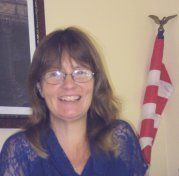
K.R. Morrison
K.R. Morrison has lived in the Pacific Northwest for over twenty years. She uses her maiden name to show honor to her Scottish roots, and as a tribute to her dad. Married for twenty-six years, she and her husband have two young-adult children.
“Be Not Afraid” is her first book, a darling little creature spawned from an all-too real nightmare. Her daughter did her the favor of drawing the cover illustration.
Both the prequel, “UnHoly Trinity”, and the sequel, “Resurgence: The Rise of Judas”, are in the final stages of creation. Hopefully they will be available early in 2013.
The Novel
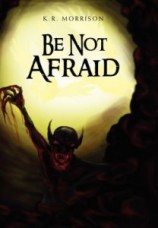
Be Not Afraid
War is imminent. Evil has overtaken the world, although the world does not know it. God must intervene on the behalf of those who love Him, and a war is brewing that will decide supremacy.
God’s plan unfolds, and His subjects must retain their faith in the midst of every evil the Father of Lies can throw at them. Lydia, because of her strong faith, is particularly seized upon by Vlad, a demonic vampire. He brings her to the brink of despair, unknowingly causing her to cling even harder to her Lord and Savior. When she is miraculously saved, Vlad finds and then harasses her friends and family, unaware of the angels and saints who are on the brink of attack against him and his minions.
The faithful are tested to the ends of their abilities. Will they be able to stand fast against the power of Death, remembering that God is with them? Or will the Father of Lies rise triumphant?
The Interview
Sumiko: First of all, I wanted to thank you for being here for an interview during Women in Horror Appreciation Month (WiHM).
K.R.: Glad to be here. Thanks for having me.
Q. Do you think women are still underrepresented in horror?
A. If you mean the types that don’t run in high heels, screaming in terror, only to fall over and not get up…the dolts…I think I’d have to agree. Strong women who face down their terror are rare.
Q. Who are some of your favorite women horror writers?
A. Now, you’re going to find this odd, but I don’t read horror. My own books scare me – especially “Be Not Afraid”. Ironic title, isn’t it?
Q. Your story “Be Not Afraid” mixes biblical lore with vampire legends – how did you come up with the idea to combine the two?
A. I have to say that the story idea was, at first, not in my control at all. What spawned this book was a nightmare I had in which I was attacked by a vampire. The sensations I write about when Lydia is attacked are the very same sensations I had in my dream. When I woke up, the dream kept playing over and over in my head, getting longer and more detailed each time. I finally wrote it all down, and the cycle I was trapped in let me go.
Q. Your heroine Lydia is strong in her faith, which is her only real protection against the evil Vlad. Do you consider her a strong female character in other ways?
A. Her strength is only as strong as her faith. In the beginning, her belief system was more based on words than real devotion, but it grew with the visions she received and the miraculous help she was given. In the next book, “Resurgence: The Rise of Judas”, she has to be even stronger to withstand the demonic, vampiric enthrallment of her husband and the salvific roles her children take on in answer to their Divine call.
Q. Is Vlad a vampire – or a demon – or both? Are vampires in your story a kind of demon?
A. When I first wrote “Be Not Afraid”, he was merely a demon in the form of a vampire. After I wrote “UnHoly Trinity”, which is the prequel, he became something a little more three-dimensional. He figures greatly in that book. I relied heavily on the myths of vampires, especially their origins in the person of Lilith, Satan’s mate and second-in-command.
Q. How did vampires come to be in “Be Not Afraid” and how to they fit into God’s plans and the battle between good and evil?
A. It was always about them from the get-go. What was weird for me was when the spiritual/inspirational aspect came into it. That really threw me. But I prayed about it, and it seemed the right thing to do. The demonic world would like nothing more than to wrest Heaven away from the souls who live there, and from humanity—that kind of plays out in my sequel, “Resurgence”.
Q. I’ve read an excerpt from chapter 12 of “Unholy Trinity” on your website…when are you planning on releasing the entire book?
A. I found the most wonderful person, Rick Carufel, who has formatted my books to go up on CreateSpace and other sites. Now I am awaiting the completion of the book covers, drawn by my cousin and my daughter (who drew the front cover for “Be Not Afraid”). I would really like to launch them on April 6, which is my dad’s birthday. I owe him a lot, not the least of which is my being here at all. Also at this time I am currently getting into the procedures for submitting to publishers for the marketing/creation of paper books too.
Q. Is “Unholy Trinity” a prequel – or sequel to “Be Not Afraid”? Or is it a stand-alone novel?
A. It is a prequel, but can be read as a stand-alone. “Resurgence” is pretty much tied to both of the other books. You see, I started to write only one other book, but it got so big that I had to split it into two books. So they became one prequel and one sequel.
Q. Is there anything you’d like to share with our readers that we haven’t covered yet?
A. There is a fourth book percolating between my ears, “Enoch’s Return”. It answers why little two-year-old Toby can call down fire from Heaven and wipe out demons.
Where to Find K.R. Online:
http://www.amazon.com/K-R.-Morrison/e/B009RBRJ0C/ref=ntt_athr_dp_pel_pop_1
https://www.facebook.com/pages/K-R-Morrison/316522281747349
https://www.facebook.com/KittyMuseBookReviews
http://www.wattpad.com/mystories
https://twitter.com/KRMorrison1
http://www.shelfari.com/krmorrison777
http://krmorrison777.posterous.com/
http://www.goodreads.com/author/show/4965766.K_R_Morrison
http://www.barnesandnoble.com/w/be-not-afraid-k-r-morrison/1100084495?ean=9781462852222
http://www.powells.com/biblio/61-9781462852215-1
http://bookstore.xlibris.com/Products/SKU-0096815003/Be-Not-Afraid.aspx


Images of Disability in Horror, Guest Blog by Kateryna Fury
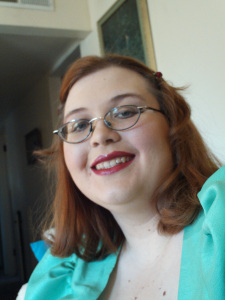
Kateryna Fury
In honor of Women in Horror Month, I have invited Kateryna Fury to write a guest blog. Kateryna Fury is a writer, musician, and aspiring film maker . She writes in the horror, fantasy and sci-fi genres and writes poetry and autobiographical stories.
She is disabled and has a spinal cord injury, Ehlers-Danlos Syndrome, 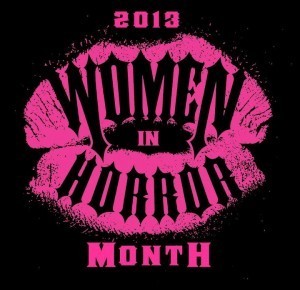 Reynaud’s Syndrome, Celiac Sprue, and the potential for other ailments. She considers herself healthy, and strives to have a high quality of life. Her current goals include preparing for the Miss Wheelchair USA competition, becoming a Championship quality public speaker Via Toastmasters, and advocating for the rights of women, disabled people, and any person who has a need that she can fulfill.
Reynaud’s Syndrome, Celiac Sprue, and the potential for other ailments. She considers herself healthy, and strives to have a high quality of life. Her current goals include preparing for the Miss Wheelchair USA competition, becoming a Championship quality public speaker Via Toastmasters, and advocating for the rights of women, disabled people, and any person who has a need that she can fulfill.
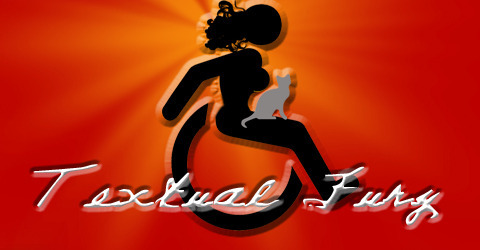 This includes beginning to prepare for the creation of a documentary about our Disabled Veterans. She lives with her beloved cats, one of whom you’ve met on this very blog – the service cat Nosferspratu, better known as Sprite.
This includes beginning to prepare for the creation of a documentary about our Disabled Veterans. She lives with her beloved cats, one of whom you’ve met on this very blog – the service cat Nosferspratu, better known as Sprite.
She writes about autobiographical subjects, politics, disability and disability rights advocacy on her blog Textual Fury.
Horror is…
The wind rattled the branches of the trees knocking them into her windows with a resounding thud. The shutters outside creaked in the wind periodically hitting against the wall with a bang. Each sound made her jump. She sat in a chair curled up with her favorite Sumiko Saulson novel, the ambiance of the storm making the pages seem that more alive. The creaks and bangs were like a chorus as she read about the monstrosities on the paper, her mind alive with horror. She was unaware that horror was about to knock on her door and introduce itself.
At first the banging blended in with the dance of the shutters, it took her a bit before she realized someone was at the door. She looked through the peephole and saw nothing but darkness. She turned to leave when she heard it again. Thud. Thud. Thud. “Who is it?” She called out. She was greeted by a muffled voice she could not understand then silence.
Thud. Thud. Thud. Her heart raced in her chest as the door was pounded on again. Finally she opened it, regretting not installing a chain. There he was, a hulking monster, a scar over his face, his hands gnarled into claws. She nearly screamed at the sight of the man as he towered above her. She was certain this was her end!
“Pizza?” He said, his tone gruff as he held out the box. She’d forgotten she had ordered it. The wafting smells of melted cheese and pepperoni forced their way through her adrenaline induced panic. She nodded, digging her cash out of her pocket and held it out. “Keep the change!” Closing the door she returned to her chair, eating with one hand and turning the pages with another. She had forgotten to lock her door, and thus as the storm blocked out most sounds she missed the soft creak as it opened once more. She missed the quiet footsteps. The last thing she knew was the words on the page, her head rolling across the floor as her assailant took the book, after all good literature was something no one could pass up. The last thing she saw, framed in her open door, was the boy next door with a knife dripping blood as he ate a slice of her pizza.
Images of Disability in Horror
Horror is a psychological reflection of fear. The fears of the writer, the fears of society, and the fears of the reader all come in to play in a dance between subconscious and conscious. It is a twining dance in which the writer works to bring out your fears, worries, and make you feel them. While you are safe with the pages of the book as a shield between the monsters with in you are not safe from the way your brain twists them. This is how horror and disability became so closely entwined.
Horror is not a new genre, though it did have a resurgence in the late 19th century with classics such as Frankenstein and The Phantom of the Opera. It is a genre so old that most folktales have elements of modern horror to them. Fairy tales were not always wholesome and gentle stories but used to use horror as a call for moral action. This is something that is still done today, though that seems to be more prevalent in film instead of literature. The stereotypically virginal final girl who bests the twisted and scarred villain with her purity can be traced back before the Brother’s Grimm. Horror is a reflection of the social conscience and the social morality.
During the Victorian Era resurgence, what is now known as Gothic Horror, reinvigorated the way people read. Books that frightened became a popular trend in part because people were afraid. In the United States after the American Civil War things had degenerated to a state of wildness in vast swaths of the country. There was upheaval between states that went unresolved and people were not entirely appreciative of the outcome. There was fear that another war would cut the country in half and that the people would not survive. The injuries from war both psychological and physical could not be hidden and with the more modern weapons created by the industrial revolution the injuries were the worst that had been seen at that point in time. The crisis medically was so dire it gave birth to a new field of medicine and recreated an old one. Plastic surgery and prosthetics were used to disguise wounds and to recreate what came before. This was the beginnings of the horror villain as we know him today.
The classic horror monster from this time was most often just a man, who at first glance seemed normal but then it became clear through the telling that there was something deeper there. He often had a bit of scarring, an old war injury or even Nostalgia (which is today known as Post Traumatic Stress Disorder). As the story progressed his mask began to crack and the shell fell away to reveal a twisted individual who was too broken to function in this world. He often killed a beautiful woman, ugliness erasing beauty. Then the hero, a handsome man without any sign of mental health struggles or physical infirmity came to the rescue, he was always dashing and always saved the other beauty, who was slightly more pure. Even Dracula uses this formula. His victims chosen based on their brazen behavior. The hero only able to save his bride because of his own pure nature and lack of signs of evil.
Often the evil is attributed to psychological issues. Even if the villain of the story is not shown to be a monster via scars or physical infirmity, they are then portrayed to have a mental illness. This invisible struggle is meant to seem all the more horrifying because then the villain can be anyone. Mental illness is often used to remove need for motive for violent actions, it is used to remove the sense of sensibility in the actions of the villain and has the long term effect in story telling of randomizing the narrative. At times physical scarring or disability is combined with the invisible mental health challenge faced by our purported villain, and the mental illness is attributed to the physical disability. The villain used to be a good person, until their disfigurement began to haunt them and they just couldn’t get over their inability to walk, their facial scars or their limp. Thus they must punish others who are able. If the narrative is not about punishment and revenge then they revert to being mindlessly insane.
The side effects of these narratives in horror have a real world effect. The mentally ill villain is portrayed as an unstoppable threat when the majority of mentally ill people are defenseless and are the most vulnerable population. They are the most in need of protection but are portrayed as the threat. This has escaped our stories and has invaded real world media including news stories. The act of violence is cast as an aberration and invariably in the event of a violent act there is a label of a mental illness or invisible impairment attached. Recent examples include almost every shooting story in the US in 2012 being attributed to Autism. When later shown to be incorrect and regardless of how unrelated it is to the actions, the media does nothing to point out their error but continues to push that the group they selected as scapegoat is the real threat. This leads to increased violence against defenseless people in an example of the fears of the many being used to persecute the vulnerable and innocent.
As society shifts so do our monsters, yet difference and disability have clung on as the faces of evil for centuries. The lack of understanding socially plays a part, yet even as society grows more understanding and open to those with visible and invisible illnesses our stories use these elements to drum on the subconscious. Perhaps it is the inability to experience disability without being forever marked by the experiences. Perhaps it is in the false narrative of normalcy. Perhaps it is in the reflections of who we as writers and readers are. Only time will tell how the changes in society change our writing, and horror has already begun to grow and change. The things that terrify us today will be our normal tomorrow. Horror goes deeper now seeking purchase in arenas beyond fear of what we may become and fear of who we are, seeking out fears with in new technology, with in diseases, and yet in the end the fears all return to the same space; the minds of the reader and the writer. What will the new horror monster be for this century? I suppose we horror writers better start typing so we can find out!


Interview with Charlee Jacob, author of “Four Elements” (fire)
This interview is being included in the 2013 Women in Horror Interview Series. Every February, Women in Horror Recognition Month (WiHM) assists underrepresented female genre artists in gaining opportunities, exposure, and education through altruistic events, printed material, articles, interviews, and online support. You can find out more about WiHM here:
http://www.womeninhorrormonth.com/
The Author
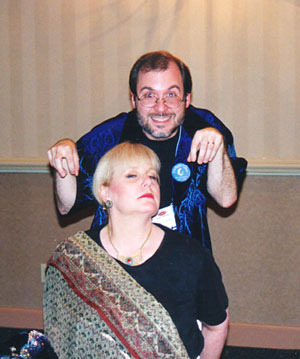
John Everson standing behind Charlee Jacobs
Seller of designer rags, and a cook — to mention only a few things.
With more than 950 publishing credits, Charlee has been writing dark poetry and prose for more than 25 years. Some of her recent publishing events include the novel STILL (Necro), the poetry collection HERESY (Necro), and the novel DARK MOODS. She is a three-time Bram Stoker Award winner, two of those awards for her novel DREAD IN THE BEAST and the poetry collection SINEATER; the third award for collaborative poetry collection, VECTORS, with Marge Simon. Permanently disabled, she has begun to paint as one of her forms of physical therapy. To see some of Charlee’s paintings, click here.
She lives in Irving, Texas with her husband Jim and a plethora of felines. To view a bibliography of Charlee’s works, click here.
(Note from Sumiko: I snagged that photo from John Everson’s webpage… which is HERE. I was tickled by the image because John Everson is one of the first authors I interviewed back when “Things That Go Bump In My Head” was brand new. The bio is from Charlee Jacob’s website).
The Book
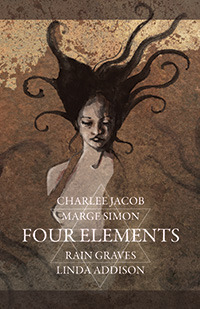
Four Elements
Four Bram Stoker Award™ winning poets join together to paint a rich, dark tapestry of evocative emotion in The Four Elements. From modern interpretations to ancient mythology, they explore the magic and mystery of Fire, Water, Earth, and Air. Their vivid poetry and prose brings to life a universe in a grain of sand, taking the reader through a journey of discovery from the inside out. Hear the hot voice of invisible awareness in Linda Addison’s interpretation of Air. Explore the realm of ethereal and surreal liquidity in Rain Graves’ Water. Burn from crevice to crown in Charlee Jacob’s wild-eyed visions of Fire. Contemplate Marge Simon’s poignant twists of dark irony to eruptions of spontaneous wonder in Earth. There is something for everyone in The Four Elements–conjured especially for the reader that likes to examine the meticulous depth and meaning in every word.
The Interview
Q. First of all, let me say that I am very excited to have the privilege of interviewing you. You are one of the very few women who writes pure, shocking, gruesome, edge-of-the abyss style horror. Why do you think there aren’t more women associated with the genre? You are truly a master of horror – your novels offer beautifully rendered yet deeply disturbing worlds, with a viscerally disturbing impact on the reader. What inspires to to write such intensely dark works?
A. To start with, even to be able to relate to stories as many of my stories are so drenched in abusive subjects, it may take a person with certain things in their background to relate: child abuse at home (both or either physical or psychological), lying awake night after night hearing a sibling scream for mercy, suffering the worst bullying all throughout school—even by some of the teachers, having a long history of poor health, even being psychic. In other words, common denominators for those who can draw on experiences with victimization, the long and short term effects of being so frightened and having no normalcy nor idea of what being normal is, of having nowhere to run. So why turn to writing or reading the stuff that serial killers and suicides are made of? Because extreme horror can be cathartic, particularly because it is extreme. We’re told by the “experts” to stick to writing about what we know. The idea, I guess, being to combine knowledge with sincerity. I had somebody spout this same tired rule to me. “Write what you know!” Usually I ignore these types who stick steadfastly to rules because they don’t have the necessity or the need to make up new ones. But this time I snapped back, “And just how would you know what I know?”
Many women may prefer to write more traditional fiction. Maybe they’re seeking romance or adventure or other outlets for escapism. And there are other women who simply consider it unladylike to work with such socially unacceptable subjects. It took me 40 years to even begin to remember, to confront, and write about the ugliness—about what I knew. Although, at first, I didn’t understand what was wrong. I would sit at my desk, crying for hours as I wrote This Symbiotic Fascination. At my first convention I was so shy and freaked out that I couldn’t talk to anybody. Some stared at me as if I was the devil’s pet minion. It didn’t help that, although I was unaware of it, I already showed certain traits for Parkinson’s disease and other maladies.
I don’t intend to suggest that all women who write or read material of an extremely dark nature are the recipients of way too much post traumatic stress. Maybe writing it is a form of witnessing (even if the plot has little or nothing to do with the genuine atrocities that spawned it). But it’s my reason. And I’ve caught hell for it from arrogant assholes and so-called colleagues who ought to know better. But for them I suppose it’s easier to pass judgment, than it is to have any.
Q. I am pleased to be interviewing all four of the women involved in “Four Elements” for Women In Horror Month. How did you chose “Fire” and what does the element symbolize for you?
A. I originally wanted to do a different element but the only one left was fire. But fire may suite me the best, since I seem to have been damned for my work. But fire can also be said to cleanse, excite, fascinate, regenerate. Just ask any phoenix.
Q. What was it like working with three other female Bram Stoker Award winners, Linda Addison, Rain Graves and Marge Simon?
A. Actually I was the first to finish my section by two months. Due to Parkinson’s, Osteo-Arthritis and Fibromyalgia (with some other maladies), it made (and makes) it difficult due to constant tremors. I can’t correctly strike the keys and my handwriting looks like a monkey with his hands full of figs has been writing in Sanskrit. I can’t sit up for long, can’t raise my head, and rarely try to get away from my wheelchair. So I didn’t read most of the e-mails from the others. The only one of the ladies I’m ever in contact with is Rain Graves. This is at Christmas when she comes from San Francisco to visit family here.
Q. Sometimes when I tell people I write horror and science-fiction, they say “I don’t like” or “I don’t read” horror, and only want to hear about the sci-fi. And I noticed perusing your reviews on Amazon, the number of people who would say, “well this book is great in spite of being horror”. Do you think horror still suffers a lot of genre bias?
A. Horror is the stepchild of the fantastical genres and the outlaw of all literature.
Q. This is Women in Horror Appreciation Month – which exists to bring attention to women in horror, who are still under represented. Why do you think women are under represented in the genre?
A. We tend to be under-everything in this and most other fields of endeavor. We’re under-represented, underpaid, and treated as if we were seeking to do “work unsuitable for a lady.” Agents and publishers want and need to make money, and they don’t believe a woman can pull in the business.
Q. Do you have anything new coming down the pike that our readers can look forward to?
A. I only just began a little writing after several years. A new publisher has requested a book. The handwriting in the original version is complete. It’s a collection of very short fiction and some essays on the nature of living with this disability (which I’m told the eventual outcome of will be dementia) and on writing horror. I have a new book of poetry I haven’t sent out. There are three novels—unpublished. The first is past it’s time, the second isn’t particularly extreme, and the third I was asked to write. When I sent it to the publisher, he said it was beautiful and brilliant and that my readers were too stupid to understand it. He wouldn’t publish it. I also have some short fiction.
Finding Charlee Online
Charlee Jacob’s website
Charlee Jacob on Amazon


February 24, 2013
In Praise of [My] Parents (why we write)
My proud poppa Robert Saulson, holding a copy of my first book “Solitude”, which he kept by his bedside. Photo taken Dec. 30, 2012.
While in the mainstream publishing, some authors may not dislike editors and be concerned about lack of control over the gutting of essential meaning from their works, in the ranks of self-publishing an editor holds a relationship to the author is the role of trusted ally. There is a reason for that which is obvious to most: one of the most common criticisms for self-published works is uneven or non-existent line and copy editing. Self-published authors frequently have low, or no, budgets. I am not going to defend my decision to publish my works with imperfect editing: okay, maybe I will defend it a little bit. I’ve said it before, but it bears repeating: I self-published “Solitude” after learning that both of my parents had cancer diagnoses, because I cared more about things like my dad being able to brag that his daughter was an author, than just about anything else related to writing. I don’t regret my choice – my father passed away on January 3, 2013. One of the things he said to me about three months before he died was, “I am sorry I won’t be around to see your book made into a movie.” Not very far below the surface, I’m a girl who wants her parents approval. The secret is out.. so now you know.
Yet – as my books have developed an audience, and I feel I owe something to my readers, I am constantly trying to improve the quality of my work – both work that I have not yet completed, and work that is already published but could use perfecting.
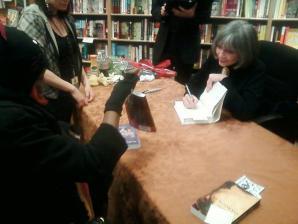
Mom at Anne Rice’s book signing a year ago today.
This is a pretty adorable photo from a year ago today – today is February 24, my mom’s birthday, and last year Anne Rice was in San Francisco signing “The Wolf Gift” at Books Inc. at Opera Plaza – so me, mom (Carolyn Saulson), dad (Robert Saulson) and Michael Lee Totten stood in a line all the way around the corner past Max’s waiting to get our books signed. My dad got so intimidated he actually took off on his scooter wheelchair thing and flew back home to Ellis Street (after standing in line for an hour saying he was going to tell Anne Rice how awesome his daughter-the-writer was because – you know, parents. Gotta love em). My mom actually went in there and handed Anne Rice copies of two of my books while she was signing our respective copies of the Wolf Gift – something I’d never have the courage to do (again parents, you gotta love ‘em) and Anne Rice did sign my book with these words “Blessings on your work! Thanks for your books” so you know I have that book practically framed. Heck, I’m surprised that I didn’t get that tattooed on my arm or something. It was awesome. So a year later – my father of course is gone. And that makes me sad. I am glad to have this happy memory of the time my parents and I spent together last February, though.
Parents. You gotta love ‘em.
I know I love mine.


Guest Blog by David Watson on L.A. Banks and Octavia Butler
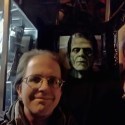
David Watson
David Watson lives in Milwaukee Wisconsin with his family. His hobbies include reading, bike riding, yoga, writing and listening to loud rock music. He also loves everything horror related and lives for the month of October. David also is a writer for Horroraddicts.net which is a podcast, blog and website started by Emerian Rich and is dedicated to promoting horror, goth, steampunk, and fetish lifestyles, art, music events and books with an emphasis on independently produced work.
You can visit Horroraddicts.net here.
The Guest Blog
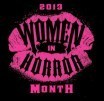 To celebrate Black History Month and Women in Horror month, Sumiko asked me to write a blog post on two writers that really don’t get the attention they deserve. I’m talking about L.A. Banks and
To celebrate Black History Month and Women in Horror month, Sumiko asked me to write a blog post on two writers that really don’t get the attention they deserve. I’m talking about L.A. Banks and  Octavia Butler. Both of these authors have won several awards and had long careers, but their writing style is very different L.A Banks wrote primarily in the horror, dark fantasy and the romance genre, while Octavia wrote primarily in the Science Fiction and Dark Fantasy.
Octavia Butler. Both of these authors have won several awards and had long careers, but their writing style is very different L.A Banks wrote primarily in the horror, dark fantasy and the romance genre, while Octavia wrote primarily in the Science Fiction and Dark Fantasy.
Leslie Esdaile Banks
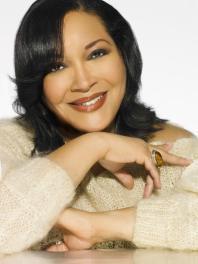
LA Banks
The first author I want to talk about is Leslie Ann Peterson who was born in Philadelphia in 1959. She started writing in the Nineties and has written under several different names, such as L.A. Banks, Leslie Esdaile Banks, Leslie E. Banks and Alexis Grant. She has written 40 novels, 12 novellas, and has written several non-fiction pieces for magazines. The first novel that she wrote was in 1996 and it was a romance novel called Sundance. She then went on to write 14 more romance novels. She has also written six crime novels and has written non-fiction for the Chicken Soup For The Soul series of books.
What Leslie is best known for is her Vampire Huntress Legend Series. There are 12 books in this series and they center around Damali Richards, spoken word artist, singer and vampire hunter. Damali leads a team of guardian protectors dedicated to exterminating vampires and demons. There are 12 guardian councils made up of the bravest and wisest men and women who are dedicated to fighting evil in all four corners of the earth.
One person is chosen from each of the guardian councils to form The Covenant. Only The Covenant can foretell the coming of The Neteru, an infant that would balance the swaying force of light every thousand years. L.A Banks has created her own mythology of vampires, hunters, demons, ghosts and goblins in her Vampire Huntress series. To find out more about this series check out vampirehuntress.com.
L.A. Banks has also written six novels in the Crimson Moon series, which tells the tale of Sasha Trudeau. Sasha leads a group of soldiers in the U.S. government that have been infected by the werewolf virus. This team investigates paranormal occurrences such as shadow wolves, unseelies and vampires. To find out more about L.A. Bank’s take on werewolves, check out her website at leslieesdailebanks.com.
A couple of the awards L.A. Banks has won include the 2008 Essence Literary Awards Storyteller of the Year and in 2009 she won the Romantic Times Career Achievement Award for Paranormal fiction. Reviewers have called her work on the Vampire Huntress series fresh and hip. While Fangoria magazine called it far superior to the Buffy the Vampire series. Sadly L.A. Banks died of late stage adrenal cancer on August 2nd 2011 leaving behind a daughter, hundreds of fans and several great books to remember her by.
Octavia Butler
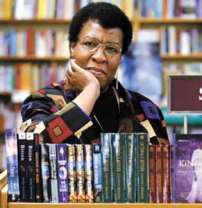 Another great African American author is Octavia Butler. She was born on June 22nd 1947 in Pasadena California and was raised in a strict Baptist household by her mother and grandmother. Octavia grew up in a lower middle class racially mixed neighborhood. She was a constant daydreamer, very shy and was diagnosed with dyslexia. At an early age she was drawn to Science Fiction and at the age of 10 she started to write to escape her boring life.
Another great African American author is Octavia Butler. She was born on June 22nd 1947 in Pasadena California and was raised in a strict Baptist household by her mother and grandmother. Octavia grew up in a lower middle class racially mixed neighborhood. She was a constant daydreamer, very shy and was diagnosed with dyslexia. At an early age she was drawn to Science Fiction and at the age of 10 she started to write to escape her boring life.
In 1969 and 1970 she attended two writer’s workshops that she says helped her writing. One was the Screenwriter’s Guild of America shop where she met Harlan Ellison and The Clarion Science Fiction Writer’s Workshop that was recommended to her by Harlan. The first story that she sold was in 1971 and was called Crossover, which came out of the Clarion workshop and was bought by Harlan for his Last Dangerous Visions Anthology. Octavia thought she was on her way to becoming a writer but it would be five more years before she was able to sell another story.
Since then she has gone on to write twelve novels and several short stories. Her best-known work was released in 1979 and called The Kindred. The story is about a woman named Edana who as she turns 26 gets pulled back in time to the year 1815 by a boy named Rufus who is the son of a slave owner. Rufus calls on Edana every time he feels his life is in danger and when Edana is there she has to live as a slave and also keep one of her direct descendants and fellow slave alive. Octavia said that with this book she was trying to get people to feel what slavery was like. Octavia also called the book a “grim fantasy”
Octavia Butler has written three different series of novels including the Patternist series, The Lilith’s Brood series and the Parable Series. Her last novel came out in 2005 and was called The Fledgling. It was about a girl named Shori who looks like she is 10 years old but is really a 53-year-old vampire. While she does crave human blood she can walk in the daylight. Shori is part of a family of genetically engineered human/vampire hybrids and she is the lone survivor. Shori is on a mission to destroy the ones that destroyed her family and at the same time deal with the fact that she is different than everyone else.
Octavia has won several awards for her writing including the Macarthur Foundation Genius Grant, a Nebula Award, a Hugo Award and she has been inducted into the Science Fiction Hall of Fame. Octavia died in 2006 at the age of 58 after a stroke. Octavia is considered by many to be the best known African American Science Fiction writer and she went on to inspire many writers. Among them is Tananarive Due, her husband Steven Barnes and Pulitzer Prize winner Junot Diaz who said Octavia has written nine perfect novels. Octavia’s works touch on many different social issues, to find out more about her work go to octaviabutler.net.
David Watson is a staff writer at horroraddicts.net


February 23, 2013
Interview with Leigh M. Lane, author of Finding Poe
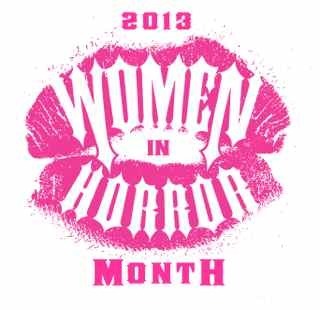 This interview is being included in the 2013 Women in Horror Interview Series. Every February, Women in Horror Recognition Month (WiHM) assists underrepresented female genre artists in gaining opportunities, exposure, and education through altruistic events, printed material, articles, interviews, and online support. You can find out more about WiHM here:
This interview is being included in the 2013 Women in Horror Interview Series. Every February, Women in Horror Recognition Month (WiHM) assists underrepresented female genre artists in gaining opportunities, exposure, and education through altruistic events, printed material, articles, interviews, and online support. You can find out more about WiHM here:
http://www.womeninhorrormonth.com/
The Author
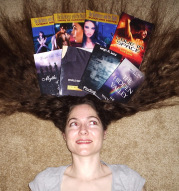
Leigh M. Lane
Leigh M. Lane has been writing for over twenty years. She has ten published novels and twelve published short stories divided among different genre-specific pseudonyms. She is married to editor Thomas B. Lane, Jr. and currently resides in the beautiful mountains of western Montana. Her traditional Gothic horror novel, FINDING POE, is currently a finalist for the 2013 EPIC Awards in horror, and has also hit Amazon’s paid bestseller list.
Her other Leigh M. Lane novels include THE HIDDEN VALLEY, inspired by Barker, Bradbury, and King, WORLD-MART, a tribute to Orwell, Serling, and Vonnegut, and the allegorical tale, MYTHS OF GODS.
For more information about Leigh M. Lane and her writing, visit her website at http://www.cerebralwriter.com.
The Book
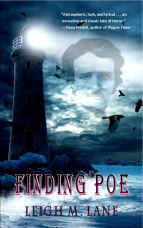
Finding Poe
When reality and fiction collide, there’s no telling what horrors might ensue.
In the wake of her husband’s haunted death, Karina must sift through the cryptic clues left behind in order to solve the mystery behind his suicide–all of which point back to the elusive man and author, Edgar Allan Poe.
Karina soon finds that reality, dream, and nightmare have become fused into one as she journeys from a haunted lighthouse in New England to Baltimore, where the only man who might know the answers to her many questions resides.
But will she find her answers before insanity rips her grip on reality for good? Might a man she’s never met hold the only key to a truth more shocking than even she could have imagined?
The Interview
Q. First of all, I want to thank you for being a part of the Women in Horror Month interview series. Does it surprise you that women are still underrepresented in the genre? What do you think we can do to change that?
A. Thanks so much for having me. I’m amazed that the stigma surrounding female horror writers still exists as strongly as it does. I know it’s been a common practice for women to adopt male pseudonyms or use initials in place of first and second names. I think the first step toward change is for women to embrace their place in horror—and ending the practice of hiding their gender is paramount. There are so many women who have just as much to offer, if not more, to the genre, and it’s time we took our rightful place as strong, provocative, and fear-inspiring writers.
Q. Your book, “Finding Poe”, is a 2013 EPIC Awards finalist in Horror. Are you pretty excited about that, and what can you tell us about the award?
A. I’m very excited and, moreover, deeply honored. EPIC (the Electronic Publishing Industry Coalition) was founded in 1998 to promote and validate electronic publishing. It offers free resources, such as model contracts, pirating takedown notices, and warnings about scams and poor business practices. Each year, it holds awards for electronically published novels, novellas, short stories, anthologies, poetry, and cover artists, welcoming publishers ranking from well respected to Indie. For more information on EPIC and its annual awards, go to http://epicorg.com/.
Q. You’re the second Poe fan we’ve had this month – well, third if you want to include me, but we just interviewed Wendy Pini about her take on “Masque of the Red Death.” Why do you think the enigmatic horror writer has had such an impact on the genre?
A. Poe’s contribution to the Gothic horror has been unparalleled. He had a gift with language and a knack for constructing immersive, sensual works, which he built in carefully crafted layers filled with an amazing level of depth and symbolism. I think his greatest contribution to the horror genre was his use of the “unreliable narrator,” a trope I employ in Finding Poe. Through the unreliable narrator, Poe was able to explore his own fears of insanity and loss of order and control. He used it to dig deep into the psyche—both his and his audience’s—creating stories and poems that one not only reads, but also experiences.
Q. “Finding Poe” isn’t your first venture into the horror genre. What are some of the other horror stories you’ve written, and what attracts you to the genre?
A. Most of my horror is in the form of short fiction, a handful of which I have published as anthology contributions. I have a novella titled The Corruption, my cyberpunk take on the zombie subgenre (with integrated technology being the culprit rather than a virus or similar mechanism), and I have a couple of dystopian novels that are scary in a much more realistic fashion, most notably my commentary on corporate America spun out of control, World-Mart. Under Lisa Lane, I have an erotic horror trilogy titled The Darkness and the Night, which features the darker side of vampire fiction and is not for the faint of heart.
What attracts me most to the genre is the opportunity it offers to explore and make sense of humanity’s many evils. Through imaginary monsters, we can take a closer look at the monsters in real life—the rapists, the murderers, the wife-beaters, the con artists—and we can put them in their rightful place in the periphery of the civilized world. I’ve known my share of human “monsters,” and I’ve seen my fill of social injustice; those are what drive me to continue writing what I write.
Q. While “Finding Poe” is a gothic horror novel, your protagonist Karina has her sanity severely tested and often doesn’t know whether the evils she is facing are imaginary or real. Do you think that there is an element of psychological terror involved, and if so how do you mix the two subgenres?
A. Psychological terror was one of Poe’s specialties, so it was only right that I based my homage to him around that. Like I said, one of the most horrifying prospects to Poe was the possibility of losing one’s sanity. If you look at some of his most notable works—for example, “The Tell-Tale Heart,” “The Cask of Amontillado,” “The Pit and the Pendulum,” and “The Fall of the House of Usher”—you can see the running theme of meshing reality and imagined horrors. “The Sphinx” and “The Spectacles” offer commentary on individual perception. I think it’s the psychological aspect to Poe’s works that make them so memorable, and I strove to emulate that in Finding Poe.
Q. One intriguing aspect of your plot is that you have woven in many elements of Poe’s stories into the narrative. How do these elements play into Karina’s story?
A. I’m glad you asked, as those elements are more important to the story than many readers have realized. The weaving of Poe’s works into the plot is actually a clue about Karina’s true nature. A good percentage of my readers have assumed that either Karina is crazy or I’ve expanded upon Poe’s “A Dream Within a Dream,” and this is not the case. There is a reason Karina experiences these pieces of Poe’s fiction, all of which you’ll notice have been distorted or twisted in some way, and once you find the reason behind it, the enigmatic ending goes from puzzling to philosophical.
Q. Do you consider the novel a sort of tribute to Poe?
A. Definitely. I had been revisiting some of his works when the idea came to me, and I took several months to read and re-read every piece of his I could get my hands on in preparation for the novel. I even went to great lengths to write it in a voice as similar to his as I could manage, hoping to achieve the effect that perhaps I had borrowed his muse for a couple of months and, in effect, allowed him to continue his work from beyond the grave.
Q. You write in other genres under other pen names – do you find it challenging to change genres or does it come naturally?
A. I feel compelled to write in multiple genres. When an idea hits me, I have no choice but to pursue it. Beginning a new story in a genre drastically different from the last requires a period of transition, but once I find a particular work’s “voice,” the rest typically falls into place without any extra effort. It’s like finding the harmony to a song’s melody; once you figure out a few of the notes, the rest comes on its own.
Q. Is there anything else you would like our readers to know that we haven’t covered yet?
A. In response to so many readers requesting a sequel to World-Mart, I’m doing the next best thing by writing a prequel. I had considered picking up where the story had left off, but given the dystopian nature (and the uncertainty I strove to leave with the abrupt but provocative ending) I decided against it. I don’t want to reveal much about it at this point, but I will say that most of the world building bridges the gap between society as we know it and the corpocracy featured in World-Mart.
Oh, and hidden in one of my answers above (beyond my answer to question #6), there’s one more clue to the puzzle of Karina’s true identity….
Find Lisa Online
For more information about Leigh M. Lane and her writing, visit her website at http://www.cerebralwriter.com.
She also has a Facebook author’s page at https://www.facebook.com/AuthorLeighMLane
And her Amazon page is here http://www.amazon.com/Leigh-M.-Lane/e/B0055DSE6Y


February 22, 2013
Drawing Out The Pain
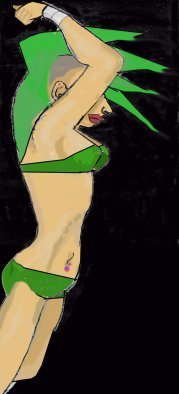
Art from Agrippa (Young Agrippa)
When I become too far off in the grips of emotional turmoil, I experience a strange form of writer’s block where it’s not impossible to write – just painful to do so – and I mean in a “I feel stomach acid erupting like a tiny volcano or geyser of batter fluid in my chest, and it feels like that creature from aliens is about to launch out of the middle of my chest” kind of literal, physical pain.
Fortunately, when I get upset like that – erm, and by that, I mean “this” – I am able to draw quite easily. Drawing and painting are, in fact, a sort of calming, meditative exercises at times like this. Which is good news for fans of the “Agrippa” comic strip.. because I am in fact currently drawing my chubby little ass off.
It’s looking like another 5 or 6 pages of the comic, which is adapted from a short story of the same name from my book “Things That Go Bump In My Head”, will be posted sometime tonight or tomorrow.
““Agrippa” is a dystopic near-future tale that takes place in an unnamed industrialized nation very much like the United States. When foreign creditors demand that the nation repay its considerable international debt or face war it enacts the Dulcetta Reforms, ultra-restrictive laws establishing debtor’s prison, and causing a large number of people – many of them seniors – to go to jail or even face execution if not continuously working to pay off their personal debts to the government. Dr. Tine, an expert in geriatric medicine, is desperately searching for employment at the beginning of our tale, having lost her useful functioning in society as the elders she once treated were rounded up and hauled off to the prison camps. Things were so bad she didn’t think they could possibly get any worse. How very wrong she was.”
You can follow Agrippa on Drunk Duck, here…
http://www.drunkduck.com/Agrippa/


Women in Horror: Sumiko Saulson: How to Turn Your Daughter Into a Horror Writer
Big thanks to Selah Janel for having me over for a guest blog…
Women in Horror: Sumiko Saulson: How to Turn Your Daughter Into a Horror Writer.



